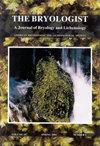在系统发育分析的基础上重新定义了Neckera、Forsstroemia和Alleniella (Neckeraceae,苔藓植物)
IF 1.5
4区 生物学
Q4 PLANT SCIENCES
引用次数: 2
摘要
摘要基于三个基因组区域重建了胸果苔属Neckera s.l.(Neckeraceae)物种的系统发育关系:质体rps4-trnT trnL trnF簇和rpl16 II组内含子,以及核核糖体DNA的内部转录间隔区(ITS1-5.8S-ITS2)。两个单分种的亚洲属被描述为新属:Taiwanobryopsis以适应warburgii内克拉,Indoneckera以适应喜马拉雅内克拉。其他分布在亚洲的“Neckera”物种中有7种被转移到Forstromia,另有4种亚洲物种被转移到台湾。六个南半球或热带物种(一个来自新西兰,一个来自非洲,四个来自南美洲)被转移到Alleniella。经过这些调整,内克拉成为北半球的一个属,主要是温带的,约有10种,热带地区没有。在这种情况下,它在形态学上的特征是缺乏侧咽(除了北加利福尼亚州)和肋缺失或薄弱。Alleniella在北半球有两个物种——第一个分化的谱系,但目前15个物种中的其余物种分布在南半球,大多数物种出现在热带的山区栖息地;然而,它在热带亚洲并不存在,在整个亚洲也非常稀少。15个物种中有12个有副冠,这是与内克拉最明显的形态学区别。Forstromia有19种,主要分布在亚洲,是项链科中最大的属。显然,更长、更明显的costa将该属与Neckera和Alleniella区分开来。台湾龙是一个形态异质的亚洲属,共有9种。Neckera decurrents Broth。与Forstromia fauriei和Neckera valentiniana Besch同义。与Alleniella ehrenbergii。本文章由计算机程序翻译,如有差异,请以英文原文为准。
Neckera, Forsstroemia and Alleniella (Neckeraceae, Bryophyta) redefined based on phylogenetic analyses
Abstract. Phylogenetic relationships of species within the pleurocarpous moss genus Neckera s.l. (Neckeraceae) are reconstructed based on three genomic regions: the plastid rps4-trnT-trnL-trnF cluster and the rpl16 group II intron, as well as the internal transcribed spacer region of the nuclear ribosomal DNA (ITS1-5.8S-ITS2). The phylogenetic reconstruction suggests numerous taxonomic changes within the Neckeraceae. Two unispecific Asian genera are described as new: Taiwanobryopsis to accommodate Neckera warburgii, and Indoneckera to accommodate Neckera himalayana. Seven of the other “Neckera” species, all distributed in Asia, are transferred to Forsstroemia, and a further four Asian species to Taiwanobryum. Six Southern Hemisphere or tropical species (one from New Zealand, one from Africa, four from South America) are transferred to Alleniella. After these adjustments, Neckera becomes a northern hemisphere, mainly temperate, genus of c. 10 species that are absent from the tropics. It is in this context morphologically characterized by lack of paraphyllia (except N. californica) and an absent or weak costa. Alleniella has two species—the first diverging lineages—in the northern hemisphere, but the rest of the currently 15 species are distributed in the southern hemisphere and most of the species occur in mountain habitats in the tropics; it is however absent from tropical Asia and very scarce in Asia in general. Twelve of the 15 species have paraphyllia, which is the clearest morphological distinction from Neckera. Forsstroemia with 19 species, heavily concentrated in Asia, is the largest genus in the Neckeraceae. Clearly longer and more distinct costa distinguishes the genus from Neckera and Alleniella. Taiwanobryum is a morphologically heterogeneous Asian genus of nine species. Neckera decurrens Broth. is synonymized with Forsstroemia fauriei and Neckera valentiniana Besch. with Alleniella ehrenbergii.
求助全文
通过发布文献求助,成功后即可免费获取论文全文。
去求助
来源期刊

Bryologist
生物-植物科学
CiteScore
2.40
自引率
11.10%
发文量
40
审稿时长
>12 weeks
期刊介绍:
The Bryologist is an international journal devoted to all aspects of bryology and lichenology, and we welcome reviews, research papers and short communications from all members of American Bryological and Lichenological Society (ABLS). We also publish lists of current literature, book reviews and news items about members and event. All back issues of the journal are maintained electronically. The first issue of The Bryologist was published in 1898, with the formation of the Society.
Author instructions are available from the journal website and the manuscript submission site, each of which is listed at the ABLS.org website.
All submissions to the journal are subject to at least two peer reviews, and both the reviews and the identities of reviewers are treated confidentially. Reviewers are asked to acknowledge possible conflicts of interest and to provide strictly objective assessments of the suitability and scholarly merit of the submissions under review.
 求助内容:
求助内容: 应助结果提醒方式:
应助结果提醒方式:


